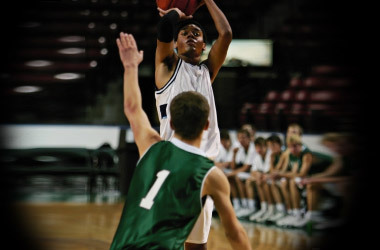The highly sought after college athletic scholarship is often a high school athlete’s dream. The seed is planted in the heads of children playing peewee football and tot soccer and rears its head most noticeably during an athlete’s high school junior or senior year season – the notion that playing well, hard work and practicing for hours on end equals a full ride. The reality is that it doesn’t.
According to Mark Kantrowitz and FinAid.org, approximately 1% to 2% of undergraduate students in Bachelor's degree programs receive athletic scholarships, equaling a total of about $1 billion a year. While that monetary amount is growing at a rate of 4.5% year over year, the percentage of those that actual receive athletic scholarships has not risen higher than 1.8% since 1995-1996.
Of that 1% to 2% who receive athletic scholarships - here’s who those students are according to the paper “Backgrounder: Athletic Scholarships” by Mark Kantrowitz written May 2011:
*More Men Receive Athletic Scholarships than Women*
Despite improvements in leveling the distribution of athletic scholarships over recent years, men continue to receive a disproportion amount of athletic scholarships over women. In 2007-2008 1.6% of men received athletic scholarships in relation to the 1.1% of women who received them, compared to 2.4% of men and 1.0% of women who received them in 1992-1993. If the leveling of the distribution of athletic scholarships between males and females continues at its current rate, it will take up to 17 years before men and women are receiving athletic scholarships at the same rate.
*African-American or Black Students Receive the Greatest Share of Athletic Scholarships among Minority Students*
Among minority students enrolled in Bachelor’s degree programs, African-American or Black students receive a greater number of athletic scholarships (22.8% in 2007-2008) as compared to other minority groups of students including Asian and Hispanic students. Asian students receive the lowest number of athletic scholarships, 0.1% in 2007-2008.
*Minority Students Receive Athletic Scholarships Roughly in Proportion to Non-Minority Students*
As a whole, minority students receive athletic scholarships roughly in proportion to their prevalence among students enrolled in Bachelor’s degree programs. In 2007-2008 of those who received athletic scholarships 65.2% were White and 22.8% were Black.
*Most Undergraduate Athletic Scholarship Recipients Hold a B- to B Average*
Of students enrolled in a Bachelor’s degree program and who have earned an athletic scholarship in the year 2007-2008, the largest percentage of students earned a 2.5-2.9 GPA, equivalent to a B- to a B average. That number compared to the average GPA of non-recipients shows those students have a slightly higher GPA. Most non-recipient students enrolled in a Bachelor’s degree program in 2007-2008 held an average GPA of 3.0-3.4 equivalent to a B to A- average.
*Most High School Athletic Scholarship Recipients Hold a B to A- Average*
Of students enrolled in high school and who have earned an athletic scholarship in the year 2007-2008, the largest percentage of students earned a earned a 3.0-3.4 equivalent to a B to an A-. As with the undergraduate students shown above, students who did not earn an athletic scholarship had a slightly higher GPA. The highest percentage of non-athletic scholarship recipient students in 2007-2008 earned a 3.5-4.0 GPA, equivalent to an A- to an A average.
*Students Who Did Not Earn an Athletic Scholarship Have Higher Test Scores*
Students who did not earn an athletic scholarship also displayed slightly higher SAT and ACT scores. In 2007-2008 those who earned an athletic scholarship scored an average 56-points behind on the SAT as those students who did not. The average SAT score for non-recipients was 1045, for recipients the average score was 989. The same findings appeared with the ACT as students who earned an athletic scholarship earned 1.4 points less than those students who did not, the average ACT score for non-recipients was 22.5, for recipients the average score was 21.1.
Kantrowitz's paper goes on to examine the breakdown of recipients by graduation rates, income and institution. For more information on athletic scholarships visit FinAid.org.
Athletic Scholarships - Who Gets Them and How Many Are There?

Two students play basketball.